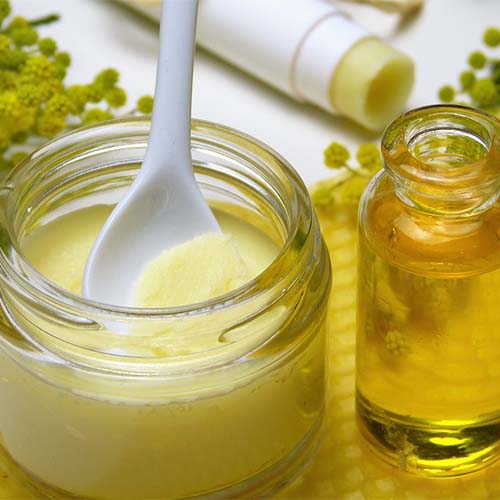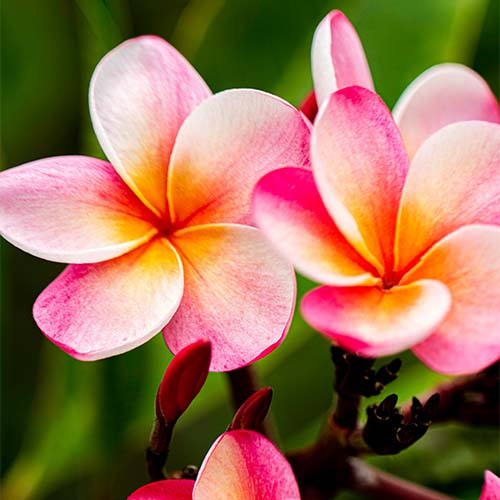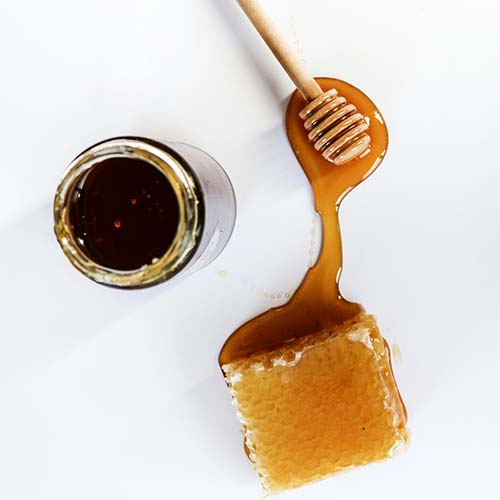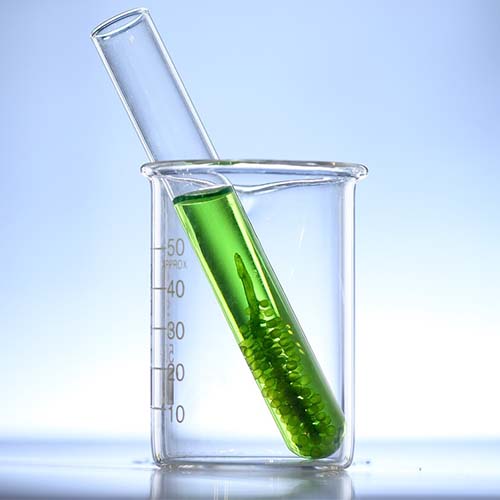Our Ingredients
Our Key Ingredients
Our commitment to purity, sustainability, and effectiveness is reflected in every product we create. Dive into the world of natural beauty with our carefully selected key ingredients, each chosen for its unique properties and transformative benefits.

Shea Butter
(Butyrospermum Parkii)
- Heals damaged skin
- Soothes itchy and irritated skin
- Moisturizes dry skin
- Treats eczema and other forms of dermatitis

Plumeria Extract
(Fragipany Extract)
- Antioxidant properties help prevent further skin damage
- Revitalizes damaged skin cells
- Known for its amazing smell

Manuka Honey
(Leptospermum Scoparium)
- Antifungal
- Antiviral
- Antibacterial
- Medical grade from New Zealand
- Antioxidant properties
- Treats eczema, psoriasis, rosacea, and more

Hemp Seed Oil
(Cannabis Sativa)
- Antioxidant
- Anti-inflammatory
- Alleviates itching and irritation
- Decreases skin dryness

Coconut Oil
(Cocos Nucifera Oil)
- Natural antiseptic
- Protects the skin from harmful UV rays from the sun
- Makes skin smooth

Blue-Green Algae
(Spirucosm)
- High concentration of nutrients, protein, and enzymes
- Strong antioxidant
- Rich in vitamins and minerals

Australian Cehami
(Centipeda Cunninghamii)
- Anti-inflammatory
- Cellular regenerative botanical
- Repairs skin damage
- Powerful moisturizer

Aloe Vera
(Aloe Barbadensis)
- Antioxidant
- Anti-inflammatory
- Promotes healing
- Soothing on skin irritations
Our Remaining Ingredients
In addition to our key ingredients, we thoughtfully select a variety of supporting ingredients to enhance the effectiveness of our products. Below are our carefully-chosen ingredients and how we use them.
-
Adenosine triphosphate
Used for: Skin-Soothing, Skin-Restoring
Organic compound from adenosine, which is formed by the hydrolysis of yeast nucleic acids.
Research has shown that ATP appears to have strong potential as a skin-restoring ingredient and as a soothing agent. -
Carbomer
Used for: Texture Enhancer
Group of synthetic texture enhancers used primarily to create gel-like formulations. High amounts of carbomers in a gel may result in the product rolling or balling up of cosmetic products on skin, but this phenomenon depends on other formulary steps taken to minimize this effect. -
Carrageenan
Used for: Plant Extracts, Texture Enhancer
Seaweed gum used in cosmetics as a thickening agent with water-binding properties. -
Carrageenan
Used for: Plant Extracts, Texture Enhancer
Seaweed gum used in cosmetics as a thickening agent with water-binding properties. -
Cellulose gum
Used for: Plant Extracts, Texture Enhancer
Any of various fibrous substances derived from plants. Cellulose gum is a natural ingredient that is most often used as a thickener but also used as a film-forming agent. This ingredient has been deemed safe as used in cosmetics by the Cosmetic Ingredient Review panel. -
Chondrus Crispus (Carrageenan) Extract
Used for: Antioxidants, Plant Extracts, Hydration
Chondrus crispus, also known as red algae, is a type of seaweed that’s a rich source of many nutrients for skin, including the pigment beta-carotene and potent antioxidants zeaxanthin, lutein, which help protect skin from the visible effects of blue light exposure. Of course, the antioxidants in red algae have wider-reaching benefits, too.
The natural polysaccharides, peptides, and amino acids in red algae also help skin to stay hydrated; meanwhile, the numerous antioxidants in this and other types of algae can help shield skin from damaging airborne pollutants.
Chondrus crispus contains a compound known as carrageenan, which forms a flexible film on skin that offers further defense against environmental stressors. -
Citric acid
Extract derived from citrus fruits and used primarily in small amounts to adjust the pH of products to prevent them from being too alkaline.
Citric acid is an AHA, and as such, in the right formula and concentration, it can exfoliate skin. However, research on this ability looked at much higher concentrations (20%, for example) than are used in skincare products—not to mention there’s proportionately more research on AHAs glycolic and lactic acids. Moreover, the AHAs lactic and glycolic acid have been shown to be more effective and less likely to promote a stinging reaction on skin. -
Decyl Glucoside
Used for: Cleansing Agents
Sugar-derived ingredient used as a gentle detergent cleansing agent. -
Gluconolactone
Used for: Exfoliant
-
Glucose
Used for: Skin-Replenishing
Monosaccharide (simple sugar) that has water-binding properties for skin. -
Glycerin
Used for: Skin-Replenishing, Skin-Restoring
Also called glycerol or glycerine, glycerin is a humectant that’s present in all natural lipids (fats), whether animal or vegetable. It can be derived from natural substances by hydrolysis of fats and by fermentation of sugars; it also can be synthetically manufactured, which is usually the case with modern-day skincare products.
Glycerin is a skin-replenishing and skin-restoring ingredient, meaning it is a substance found naturally in skin, helping to establish normal balance and hydration. It’s one of the many substances in skin that helps maintain a healthy look and feel, defending against dryness and working to maintain skin’s moisture level. Essentially, glycerin is a master at hydration, and works best when combined with other replenishing and emollient ingredients.
Some people wonder whether using products with glycerin takes too much water from skin when there isn’t enough humidity in the air. This can occur with pure glycerin (100% concentration—an amount that’s never used in skincare products). Any humectant (including glycerin) used in pure form can increase water loss by attracting water from the lower layers of skin into the surface layers when the climate is too arid (low humidity). For this reason, glycerin and humectants are typically used in concentrations of 5% or less and always combined with other ingredients to soften skin. In fact, glycerin combined with other emollients and/or oils is a fundamental cornerstone of most moisturizers. -
Glyceryl Linoleate
Used for: Antioxidants, Vitamins
Vitamin F is a mix of polyunsaturated fatty acids. It is perfect for dry and irritated skin, as it hydrates and softens it, while resoring lipid barrier. Vitamin F is used in skin care and hair treatments to repair damaged hair. -
Hydrolysate
Used for: Emollients, Antioxidants, Plant Extracts, Texture Enhancer
The hydrolyzed form of algae extract, and a rich source of polysaccharides for skin. -
Iron oxides
Used for: Coloring Agents/Pigments
Compounds of iron that are used as coloring agents in some cosmetics. They also are used as a metal polish called jewelers' rouge, and are well-known in their crude form as rust. Although iron oxides occur naturally, the forms used in cosmetics are synthetic. Iron oxides are closely regulated by the U.S. Food and Drug Administration. According to the website CosmeticsInfo.org (which links to the FDA’s Code of Federal Regulations for iron oxides), "Synthetic iron oxides are produced in various ways, including thermal decomposition of iron salts, such as ferrous sulfate, to produce reds; precipitation to produce yellows, reds, browns, and blacks; and reduction of organic compounds by iron to produce yellows and blacks." -
Lecithin
Used for: Emollients, Skin-Replenishing
Phospholipid found in egg yolks and plants. Widely used in cosmetics as an emollient and water-binding agent. Lecithin also has skin-restoring ability. -
Mica
Used for: Coloring Agents/Pigments
Earth-derived silicate minerals included in products to give them sparkle and shine as well as varying degrees of opacity. The amount and look of the shine mica provides depends on the color and how finely it’s milled for use in liquid, cream, or powder products. It is considered safe for use in cosmetics, including those applied to the eyes and lips. -
Phenoxyethanol
Used for: Preservatives
Phenoxyethanol is a widely used synthetic preservative that has global approval for use in all cosmetic products in concentrations up to 1%. It’s often used in even lower amounts, such as when combined with other ingredients like ethylhexylglycerin. In this case, lower amounts of phenoxyethanol can be just as effective as the maximum approved amount.
Phenoxyethanol is incredibly versatile: It works in a large range of formulas and pH ranges, has broad spectrum activity against many pathogens you don’t want multiplying in your skincare products, is stable, and is compatible with many other preservatives used in cosmetics.
Phenoxyethanol has become the new skincare ingredient to be demonized by various retail/natural marketing cosmetic companies and websites. The controversy is similar to the absurdity over paraben preservatives. Parabens were made evil in skincare products because of studies showing they are endocrine disruptors, but parabens don’t have that property when they absorb into skin. Much like parabens, phenoxyethanol being a problem in cosmetics is based on research that has nothing to do with skincare. The negative research about phenoxyethanol is not about the cosmetics-grade version. That’s a big difference. Even plant extracts have to be purified when they are removed from the ground and put into skincare products. No one wants worms, fertilizer, heavy metals, and dirt in their products. Phenoxyethanol is the same situation, it is purified before it is used in cosmetic formulations.
As with many cosmetic ingredients, concentration matters. A 100% concentration of phenoxyethanol comes with some scary warnings. For example, the Safety Data Sheet on this preservative describes it as harmful if it contacts skin, is inhaled, or gets in to the eyes. Animal studies have shown it causes reproductive and developmental toxicity—no wonder some panic is occurring! As it turns out, the animal studies were about mice being fed large doses of this preservative, not about it being applied to skin, absorbing, and then causing reproductive or developmental harm. If you fed mice mass amounts of lavender or other essential oils, they would suffer terrible consequences.
The rest of the alarming studies are about using phenoxyethanol in full-strength or atypically high concentrations, not the amounts of 1% or less used in cosmetic products. Think of it as the difference between taking one sip of wine versus chugging several bottles at once!
Back to topical use, research has shown that compared to many other preservatives, the incidence of a sensitized or allergic reaction to phenoxyethanol applied as used in cosmetics is rare. But the truth is all preservatives, even the natural ones, carry some risk of sensitizing skin. That’s because preservatives of any kind are meant to kill fungus, bacteria, and mold and that can negatively impact skin. Ironically, in order for natural preservatives to be effective, they have to be used in much higher amounts than synthetic preservatives, typically up to 10%. This higher amount poses irritation and sensitizing problems for skin, so natural preservatives aren’t a slam-dunk replacement for synthetics, not even close.
An interesting factoid: although the phenoxyethanol used in skincare products is synthetic, this chemical occurs naturally in green tea, just like parabens occur naturally in berries and other natural foods. -
Pullulan
Used for: Antioxidants, Texture Enhancer
Glucan gum produced by black yeast that contains polysaccharides, which makes it a good water-binding agent, thickening agent, and antioxidant. -
Retinyl Palmitate
Used for: Antioxidants, Skin-Restoring, Vitamins
Combination of retinol (pure vitamin A) and the fatty acid palmitic acid. Research has shown it to be an effective antioxidant when applied to skin. You may be surprised to learn that retinyl palmitate is found naturally in our skin, where it works as an antioxidant, particularly in regard to helping protect skin from UV light exposure—though it does not replace the need for sunscreen.
Reports that retinyl palmitate is not a safe ingredient are false. They’re based on a study from nearly 20 years ago that has never been reproduced or tested under real-life conditions such as how people use sunscreens that contain this ingredient. In addition, to date, there is no scientific evidence that retinyl palmitate is a carcinogen in humans. The safety of retinyl palmitate is supported by several accredited organizations and their opinions are widely available online. If you still have concerns, we encourage you to research the topic further. -
Sacchromyces Copper Ferment
Used for: Antioxidants
Extract of yeast fermented in the presence of copper ions. There is no known benefit for skin, though it may have antioxidant properties. -
Saccharomyces magnesium ferment
Used for: Antioxidants
Extract of yeast fermented in the presence of magnesium ions. -
Saccharomyces potassium ferment
Used for: Antioxidants
Extract of yeast fermented in the presence of potassium ions. -
Sodium Ascorbate
Used for: Antioxidants, Vitamin -
Sodium Benzoate
Used for: Preservatives
Salt of benzoic acid used as a preservative in both cosmetics and food products. The U.S. Food and Drug Administration (FDA) has designated it a “generally recognized as safe” ingredient. -
Sodium hyaluronate
Used for: Skin-Replenishing, Antioxidants, Skin-Restoring
Salt form of skin-replenishing ingredient hyaluronic acid; considered more effective for skin than pure hyaluronic acid due to its greater compatibility. -
Sodium Hydroxide
Used for: Cleansing Agents, Sensitizing
Also known as lye, sodium hydroxide is a highly alkaline ingredient used in small amounts in cosmetics to establish and hold the pH of a product.
It’s also used as a cleansing and denaturing agent. In high concentrations, it’s a significant skin sensitizer. -
Sorbitol
Used for: Thickeners/Emulsifiers, Hydration, Slip Agents
Sorbitol is a type of sugar that can be created synthetically or derived from natural sources. Similar to glycerin, it is a hydrating ingredient (technically a humectant), thickening agent, and slip agent.
Its sugar component makes sorbitol an intriguing prebiotic, an ingredient that can "feed" the probiotics that make up a person’s skin microbiome, thus helping it become balanced. Specifically, sorbitol’s breakdown by certain probiotics can create beta-glucan, a skin-calming antioxidant. -
Titanium dioxide
Used for: Sunscreen Actives, Coloring Agents/Pigments, Thickeners/Emulsifiers
Inert earth mineral, used as a thickening, whitening, lubricating, and sunscreen ingredient in cosmetics. It protects skin from UVA and UVB radiation and is considered no risk of skin sensitivity. Because its gentle, titanium dioxide is a great sunscreen active for sensitive, redness-prone skin. It’s great for use around the eyes, as it is highly unlikely to cause stinging. -
Tocopherol
Used for: Antioxidants, Vitamins
-
Vaccinium myrtillus (bilberry) fruit extract
Used for: Plant Extracts, Antioxidants
Bilberry is one of the best sources of antioxidant compounds known as anthocyanins, polyphenolic chemicals that give bilberries their dark color. Not surprisingly, bilberries are similar to blueberries.
Applied to skin, bilberry is known to strengthen skin against signs of redness, likely due to its calming properties. Bilberry can also boost skin’s environmental defenses in the presence of UVA light.
Note that while bilberry contains antioxidants known as tannins, the amounts are low and unlikely to pose a risk to skin. Tannins are one of the antioxidant chemicals in some plants (the most well-known being witch hazel) that offer benefits and risks for skin when they comprise a larger portion of a plant’s antioxidants. -
Xanthan Gum
Used for: Thickeners/Emulsifiers, Texture Enhancer
Natural ingredient used as a thickening agent, texture enhancer, and to stabilize emulsions, which is a general term for mixtures of unlike substances such as oil and water.
